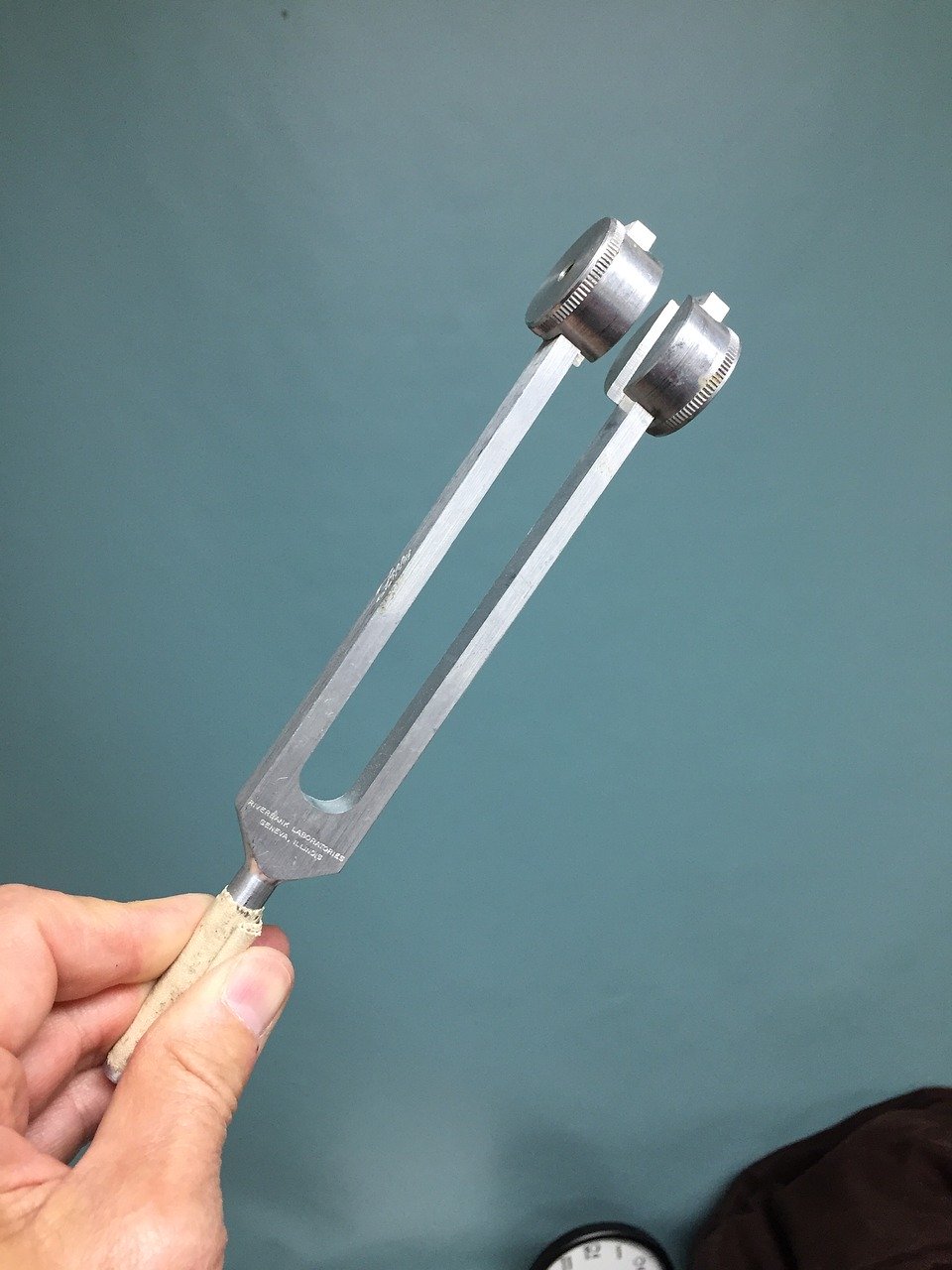

The fundamental vibration mode of a tuning fork radiates sound as a longitudinal (or linear) quadrupole sound source with a well-defined transition between the near-field and far-field radiated patterns. But, it can be effectively demonstrated by touching the stem of a vibrating fork to a table top, door, or piano soundboard. This stem motion is very small, and difficult to feel if you place a finger tip at the bottom of the stem. However, the stem actually vibrates up and down at the fundamental frequency as well as at the second harmonic, 852 Hz - twice the frequency of the fundamental (even there is no vibrational mode of the fork at this frequency). Vibration sensation will be tested bilaterally using a 128 Hz tuning fork placed over the dorsum of the great toe on the boney prominence of the DIP joint. This test usually involves placing a vibrating 128Hz tuning fork upon the patients big toe and asking the patient whether or not they can feel the vibration.

Vibratory sensation should be tested over the tip of the great toe bilaterally. The patient should note the end of vibration about the same time as the examiner, who feels it through the patient’s joint. The tuning fork is widely used in clinical practice and provides an easy and inexpensive test of vibratory sensation. Testing of vibration sense is particularly. To test vibration sense, the examiner places a finger under the patient’s distal interphalangeal joint and presses a lightly tapped 128-cycle tuning fork on top of the joint. Heinrich Adolph Rinne (1819-1868), a German otologist, proposed the test, which was subsequently named. Both of these tests are now routinely taught in medical schools and performed regularly to assess patients with hearing problems. When vibrating in the fundamental mode, it would appear that the stem of the fork is stationary. Testing of vibratory sensation should be performed in all patients as part of a routine neurologic examination. Over the years, many types of tuning forks tests had been developed to assess hearing loss, but today only two have withstood the test of time: Rinne and Weber.

This is a symmetric mode, since the two tines are mirror images of each other.Ī video on my YouTube Channel shows the slow-motion oscillation (shot with a high speed camera at 1200fps) of a 125 Hz tuning fork vibrating in its fundamental mode of vibration.
#VIBRATION SENSATION TUNING FORK FREE#
The two tines of the fork alternately move toward and away from each other, each bending like a cantilever beam, fixed at the stem and free at the other end. These preliminary findings are based on a small sample size thus further research is. The fundamental mode of vibration is the mode most commonly associated with tuning forks it is the mode shape whose frequency is printed on the fork, which in this case is 426 Hz. This study suggests that assessment of vibration sensation with the tuning fork may be unreliable.


 0 kommentar(er)
0 kommentar(er)
